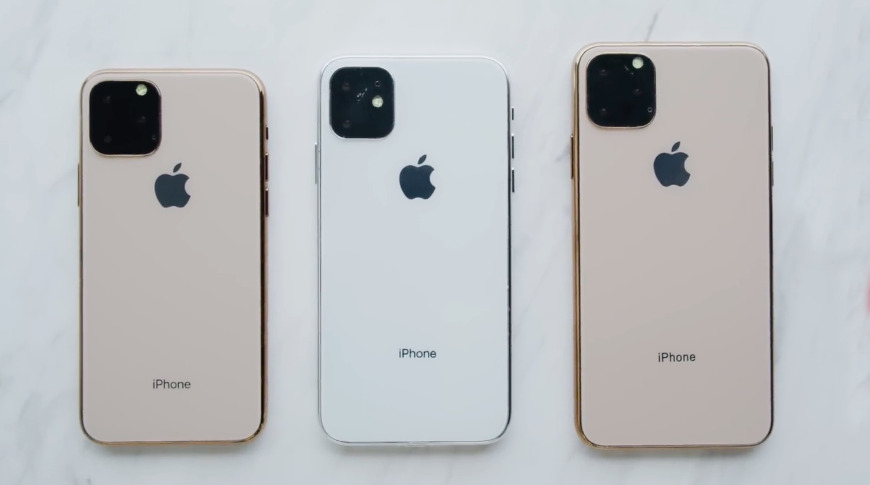Two 2020 iPhone models predicted to have front and back VCSEL rangefinders
The rear cameras on dummy models of Apple's expected new iPhones, with a similar design expected for 2020. Render by Benjamin Geskin

Apple analyst Ming-Chi Kuo is predicting that two out of the three iPhones expected in 2020 are going to have time of flight sensors, intended for photo quality and augmented reality applications.
In a note seen by AppleInsider, Ming-Chi Kuo believes that "time of flight" vertical-cavity surface-emitting laser (VCSEL) sensors will be included on the 2020 analogues to the iPhone XS and iPhone XS Max. Kuo is also predicting that the company will ship in total 45 million of so-equipped iPhones by the end of 2020
Huawei is also expected to add the technology, but starting in 2019 at some point. In total in 2019 and 2020, Huawei won't hit 45 million devices shipped, falling short at 39 million, according to Kuo.
Existing Apple supplier Lumentum is expected to benefit from the shift, as well as Win-semi, Crystal Optech, and Viavi to a lesser extent.
Apple's existing 3D hardware, TrueDepth, uses a single VCSEL to project structured light — a grid of dots — onto a subject. By measuring deviations and distortions in the grid, the system is able to generate a 3D maps that is in this case used for biometric authentication.
Slight alteration to the technology and receiving sensors can generate depth maps by measuring the time it takes pulses of light to travel to and from a target surface. In June 2017, reports indicated Apple was evaluating time of flight for a rear-facing camera that would assist in augmented reality applications and faster, more accurate autofocus operation.
Rumors have previously suggested that Apple will use a smaller TrueDepth camera allowing it to shrink the notch on OLED screens, in conjunction with a seven-piece lens system for the rear camera. A more questionable claim is that there could be a China-exclusive model that switches out Face ID for subscreen Touch ID.
A recent rumor suggests that the Taptic Engine responsible for all of the iPhone haptics will see a revision in 2019, and carried along to the 2020 iPhone.
It is generally believed that Apple will have three models, all of them OLED-based, in 5.4-, 6.1-, and 6.7-inch sizes in 2020. Kuo previously believed that the 6.1-inch unit would forego 5G support, relegating it to mid-tier status like 2018's iPhone XR — but has recently changed course on this prediction.
 Mike Wuerthele
Mike Wuerthele












 Malcolm Owen
Malcolm Owen
 Chip Loder
Chip Loder

 William Gallagher
William Gallagher
 Christine McKee
Christine McKee
 Michael Stroup
Michael Stroup







8 Comments
Confusing. If all 3 iPhone models in 2020 release are OLED and 5G than beside screen size difference, which 2 iPhones get VCSEL range finders ? I guess all 3 will get range finder and price difference between them is based on the size since rest of functionalities are the same.
5G is not till next year 2020, read more carefully.
It’s my understanding that phone sized VCSELs only have a range of a couple of meters. How’s that going to work for normal photography/AR?
I not really seeing why people should care... So, we have an incremental improvement to autofocus? Will people have 3D photos to take up multiples of more space?
A smaller notch would be nice. But, will that cause people to upgrade?
I think Apple is going to confuse people, if they release three new models. And, still making the 2 previous generations of iPhones...
I realize Apple is trying to hit different price points but it’s messy, by my count is there will be over six models to chose from, not including referbs...
Apple needs to work on simplifying consumers choices. If they’re going to release 3 new models, they should keep only 1 from the previous generation. (3 models + XR for example)